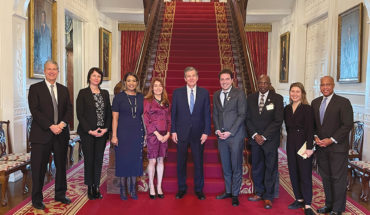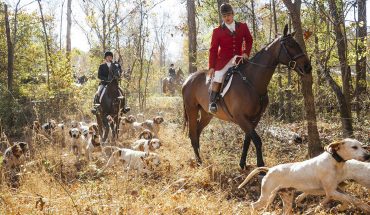by Tina Haver Currin
photographs by Jill Knight
Just fifteen minutes from downtown Raleigh lies a thunderous land of revving race cars, bologna sandwiches, and if you’re (un)lucky, maybe a few flips, fires, and crashes, too.
A breezy April evening promises favorable weather for opening night at Wake County Speedway, though the air is heavy with a mix of tawny pollen and burning rubber. As dusk settles, drivers run practice laps, wriggling side to side to warm the tires. There are the Legends, 5/8-scale replicas of 1930s and 1940s American autos, and the spunky Bandoleros driven by racers between the ages of 5 and 15 years old. Even a clunky wood-paneled station wagon takes a lap.
They’re all getting ready to race on one of the shortest, fastest, most intense tracks there is – a quarter-mile, banked oval that packs more action into one lap than any you’ll find anywhere else in the Triangle on a Friday night in summer.
This evening marks the 53rd consecutive season for the track built by Glenn and Marvin Simpkins in 1962. It remained a clay oval for its first 25 years – like the more than 700 clay tracks across the United States, including 14 in North Carolina. But it was the coat of asphalt laid in 1987, as well as its unique Friday night schedule (most tracks race on Saturdays), that set the Wake County Speedway apart. Attendance increased by 20 percent after the track was paved, ushering in a new era for the speedway.
This year, another new era begins. Former racer Mike Stodder and his wife Kristie bought and took over operations of the Wake County Speedway in January. Joining them is veteran announcer, racer, and dirt track owner Charlie Hansen, who serves as vice president of operations for this year’s racing season. Together, they’ve devoted the first quarter of the year to upgrading the facilities and singing the praises of the short-track race.
“My favorite part of the speedway is the size,” says Mike Stodder, who raced at Wake County from 1989 to 1994. “The quarter-mile paved and banked racetrack is few and far between. The action is close, and the fans can see the whole track from the grandstands. It definitely enhances the entertainment factor.”
He’s right: This is no Charlotte Motor Speedway. That impressive mile-and-a-half track holds annual NASCAR races like the Coca-Cola 600 and the Sprint All-Star Race. No such name brands here, but these races pack a different kind of wallop: They’re fast, aggressive, and brief – between 20 and 60 laps per division. And you can watch them happen up close.
“I’ll be honest with you,” says Hansen, his southern lilt dropping in pitch as he levels with a visitor. “In NASCAR, the cars can get so spread out and it’s five hundred laps. Sometimes I’m like, ‘Just wake me up when it’s over.’ But a short track makes for such great racing. There’s really no comparison. And then put 15 or 20 cars in each class,” Hansen continues, “and it just gets super exciting.”
It’s a whole lot of action in a small package. If you’re looking for the speedway on Google Maps, it’s a barely visible blip. Zoom in a bit, and you’ll see that the baseball diamond across the street rivals it in size.
A good little time
Fans who arrive at the speedway when the grandstand gates open at 6 p.m. watch mechanics make final tweaks to the late models – the highest class of local stock car racing, and arguably the stars of the show – or get their checkered flags signed by Tommy in the flagstand.
“We call that one the Clark Griswold,” comes the announcement over the loudspeaker as the station wagon leaves the pit. The reference to Chevy Chase’s jalopy-driving character in National Lampoon’s Vacation gets a round of applause. With the number 83 splashed across its side, the Griswold is ready to compete in a brand-new division for beginners: The Bomber class.

Charlie Hansen
Hansen and the Stodders are working hard to keep things interesting. Despite a half-century of success, the new owners worry that unless they’re careful, short-track racing – paved or otherwise – might go the way of other old-fashioned Southern pastimes. That’s why they’ve spent so much time this season on upgrades and meticulous fixes, working through the night to fill in potholes, tweak the stadium’s audio and lighting, and coat everything in a fresh layer of paint.
“The interest level in short-track racing hasn’t been there the way it was in the ’70s, ’80s and ’90s,” says Hansen, with a sigh. “If we’re not careful, we’ll slip into the drive-in movie mode, where there just aren’t any left. The bottom line is that we’re in competition for the entertainment dollar, and that’s what we have to do. Entertain.”
Stodder, unlike many of his rural counterparts, is from North Raleigh. One of his goals for this season is to raise awareness of the track and expand the demographic of race attendees. “I have a friend who attended the opener who had never been to any kind of a race before,” he says. “He and his daughter had a great time, but they had no idea there was even a facility like this in the area. That is our biggest struggle. It’s been here and running since 1962, but so many people don’t know about us.”
Attendance doesn’t seem to be a problem on opening night. As the sky grows dark, the stands fill to capacity. Fans in baseball caps and race shirts lug coolers up the blue bleachers or the nearby grassy hill – the Speedway is BYOB. Many spectators arrive early to watch practice and qualifying rounds, though some wait until the rubber really hits the road at 8:30 p.m.
“There’s a good, core base of people who come every week, who have been coming every week since they were little kids,” Hansen says, gesturing to the 100-odd spectators lining up for their tickets. “A lot of people have a passion for Wake County that you don’t find at other tracks, especially because this is the 53rd consecutive year. We try our best to make it a fair atmosphere every other week. It’s a good little time.”
Dennis Sargent Jr.
By day, Dennis Sargent Jr. is an attorney with his own law firm in Cary. His military background is apparent in his firm posture and crisp suit, not to mention his stern-looking mustache. But on Friday nights in the summer, he wears another hat: race director. Get Sargent talking about short-track racing, and his posture loosens; he’s as friendly and enthusiastic as they come.
“Short-track racing is not like what you see on TV. During the day, I’m an attorney. Mike, the owner, also runs a digital printing business,” he says. “You may have friends that you don’t even know are involved in racing. It’s local people with real jobs during the week who come out every weekend, who spend their hard-earned money to put on a show for the fans.”
Though he’s been racing for 15 years, Sargent takes on a new role this season as the Speedway’s race director. Now he’s behind the scenes, rattling into a two-way radio and ensuring the event runs smoothly from start to finish.
“My job is to make sure that everybody does what they’re supposed to on and off the track,” he explains. “We have a drivers’ meeting every race to talk about things that went right or wrong. I have officials in radio contact with me, and people who work for the track that I direct to make the show run efficiently. It’s a big team effort.”
Some might say Sargent was born to race. His grandfather, father, and uncle were all drivers, and now, his 17-year-old son has taken up the hobby, too. Those family ties are what Sargent finds so special about the short track.
“If you go in the pits, especially at Wake County, you’ll see most of the race teams are full of parents and children and husbands and wives. Generations of families, all involved,” he says. “My Dad and I go to races together every weekend from March until November. In fact, part of the deal for me to take the job at Wake County is that I had to get a free pass for my Dad.”
Melanie Jones
Of course, there are the driver rivalries and swapping paint (for the uninitiated: That’s when two cars bang or bump into each other while jockeying for position). But one of the most talked-about features of the Wake County Speedway doesn’t occur on the track. It’s the fried bologna sandwich.
“The fried bologna sandwich is a tradition that has been passed down over the years,” says Melanie Jones (photo top left), owner of Jonesy’s Concession & Catering. Jones has provided the concessions for the Wake County Speedway for the last three years, though the legendary bologna sandwich has been around for more than a decade.
“We took it to the next level and now have fried bologna burgers,” Jones says. “They are bigger than the standard bologna sandwiches. We want our customers to get their money’s worth.”
Even though coolers are allowed in the stadium, Jones estimates that she serves more than 300 customers every race. The most popular item, of course, is the fried bologna burger, but fans, drivers, and speedway staff also line up for Red Snapper hot dogs and ooey-gooey cheesesteak fries (a Jonesy’s original).
Her favorite part of race nights? “Our interaction with the customers. Wake County Speedway has some of the nicest customers we serve,” Jones says. “A lot of customers bring their kids. We hear stories of how people grew up coming to the track, and now they are bringing their kids and their grandkids to the speedway. It really is a family event.”
Justin Fussell
Ask Justin Fussell if he wants to talk about racing, and he’ll laugh at you.
“Do I want to talk about racing?” he scoffs. “That’s the best question to ask a race car driver!”
By day, Justin Fussell works at Fussell Tire in Apex alongside his mother and father, Kent and Teresa. By night – and he estimates it’s pretty much every night – he works on his car, preparing for the next race.
It’s Friday night when we speak, and if everything were going according to plan, he’d be running through qualifying rounds at the racetrack. But due to inclement weather, Fussell is doing interviews instead.
“I’m kinda bummed out about the race,” he admits. “You’re working on your car the whole time and then you get right down to it and it doesn’t happen. It’s just horrible! But I understand.”
Though he’s frustrated at the prospect of waiting two more weeks until the next race, Fussell is kind and humble when he speaks. He insists on including his sponsors (KFC, Hurricane Grill & Wings, Locklear Roofing, and of course, Fussell Tire), as well as his crew chief, Victor Safarian, when mentioning his success. He’s thankful most of all to his friends and family, who have supported him as a first-generation driver.
But don’t think for a second that humility means he’s passive on the track. At the helm of a battered orange Mustang (number 07, if you’re looking), Fussell took first place in his division on opening night, and he won the championship last year, too.
“I just love going in circles,” he says with a laugh. “There’s something about getting close to other cars. You have a great time watching somebody wreck; you have a great time watching somebody win. I just love everything about racing.”
Fussell started racing go-karts when he was 13 and immediately fell in love with the sport. As soon as he graduated high school, he began working 40 hours a week to save enough money to pursue his passion. These days, he waits patiently each week, counting down the time until he can next get on the track.
“From the time I was seven years old, I knew exactly what I wanted to do,” he says. “I just wanted to race.”













